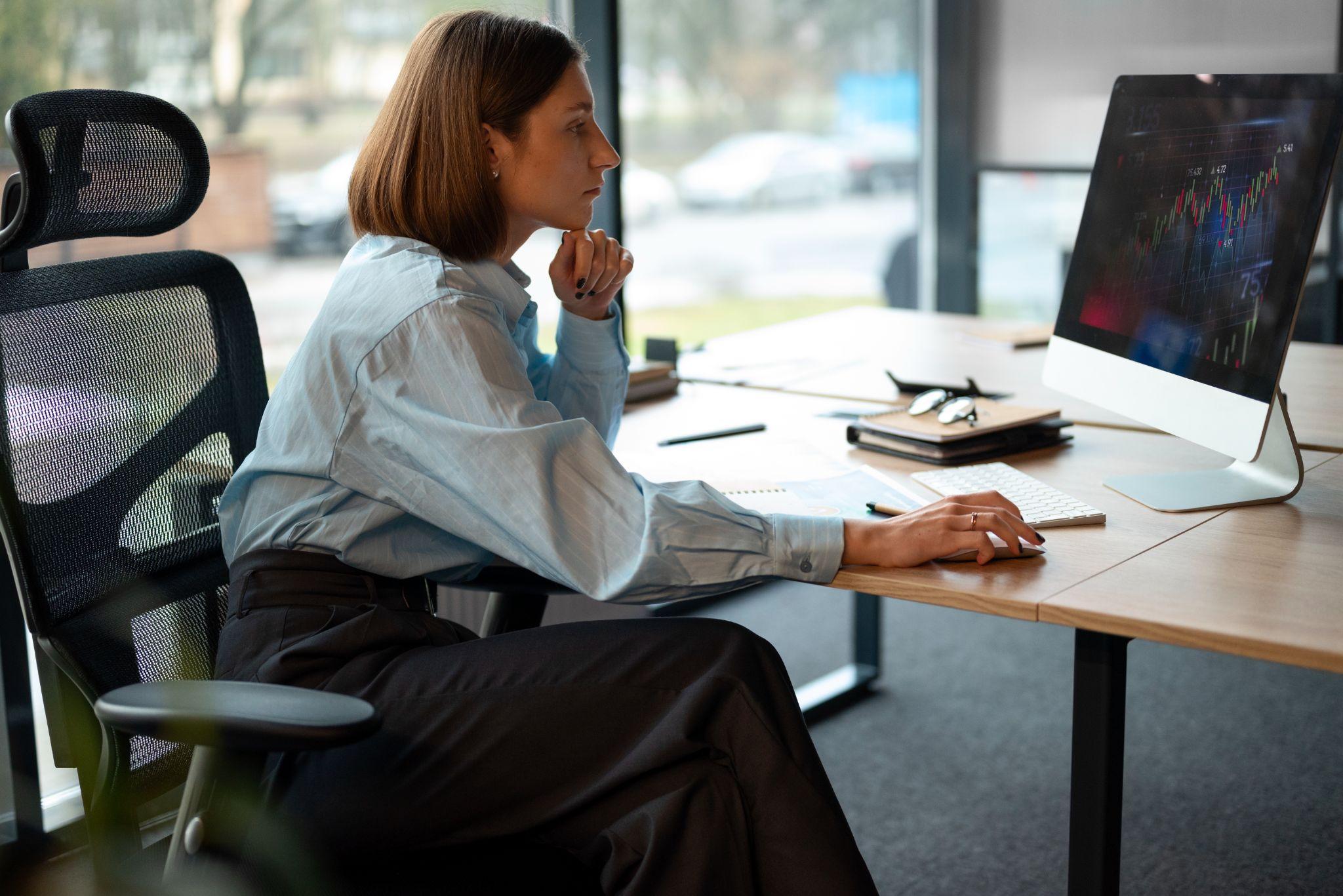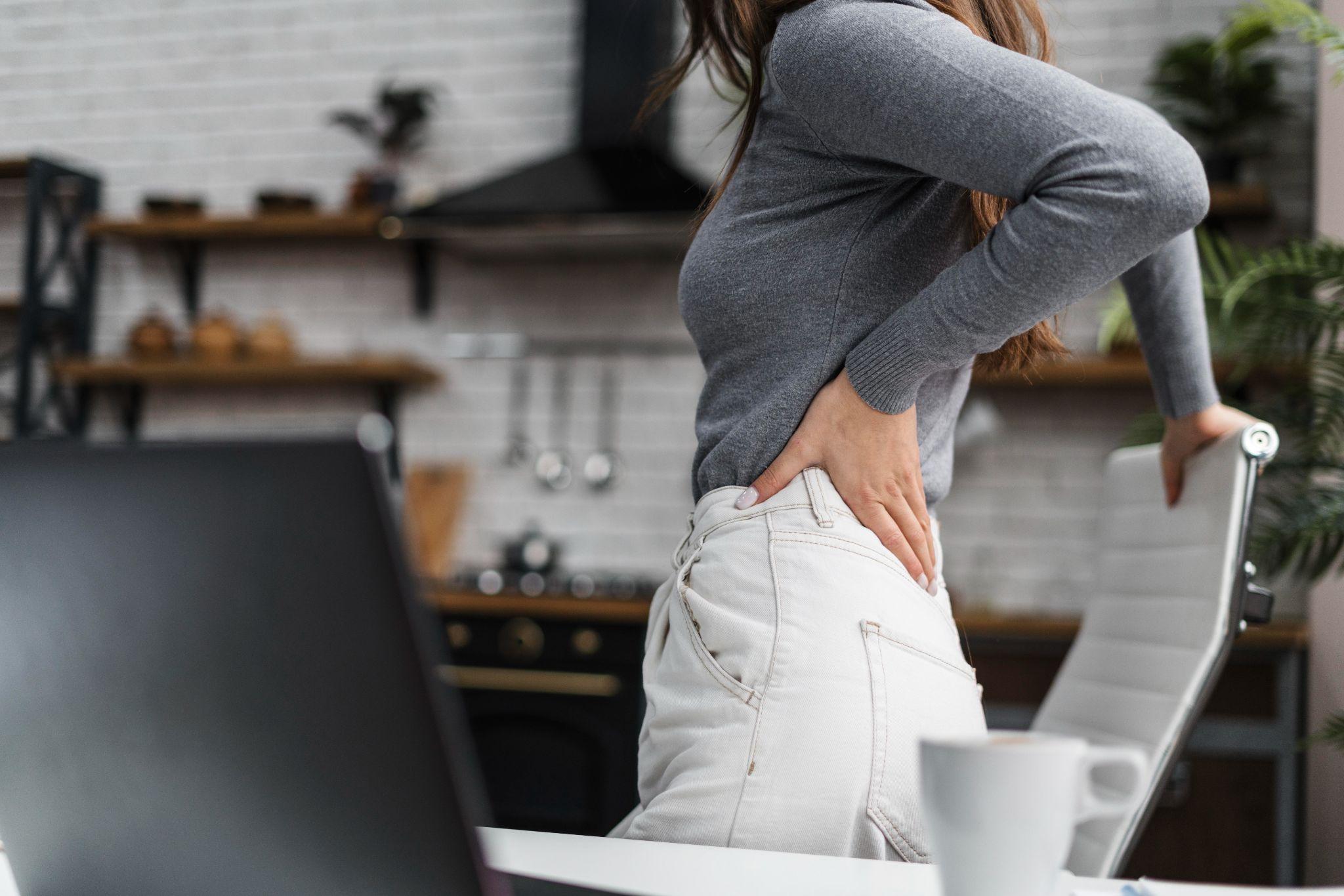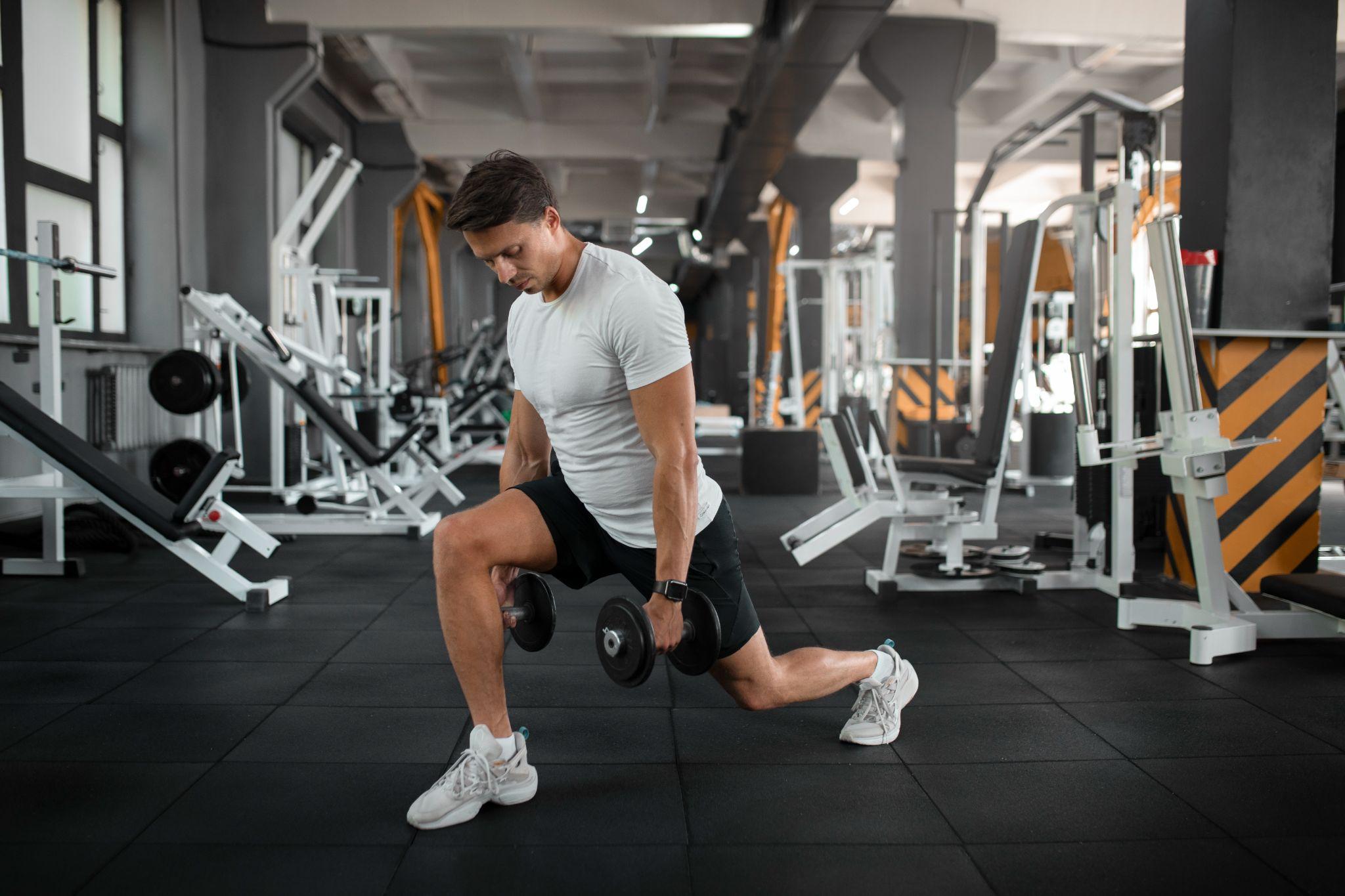How Desk Ergonomics Can Affect Your Hips and Spine?

Poor desk ergonomics can cause stiffness in the hips due to prolonged sitting without proper posture support.
Home work and desk work are now the norm. Adults work a whole 6-10 hours or even longer at the desk without even giving posture or ergonomics a thought. Sitting might seem innocent, but it has enormous effects on the musculoskeletal system, especially the hips and the spine.
Bad sitting posture over long periods can cause slouching, stiff hips, and lower back pain. If prolonged, they can become longstanding conditions like disc herniation, sciatica, or even hip joint pathology. Spine and hip health thus rely greatly on desk ergonomics. Awareness and adherence to sound ergonomic principles are essential not only for comfort but also for orthopedic longevity.
The Connection Between Desk Ergonomics and the Spine
Inappropriate workstation ergonomics can encourage poor posture, which directly affects the spine. Postures include forward head, rounded shoulders, and slouching.
Pressure on Spinal Discs
Inadequate sitting loads the spinal discs unevenly. This pressure leads to lower back pain and can lead to long-term disc degeneration.
Risk of Long-Term Conditions
Inadequate posture increases the risk of developing long-term conditions, such as herniated discs, sciatica, and chronic backache. Even minor misalignments, if continued for decades, can lead to long-term problems and reduced mobility.
Impact on Curvature of the Spine
Repetitive sitting in non-ergonomic positions naturally tends to flatten the normal lumbar curvature or increase kyphosis (hollowing of the upper back). You must maintain the spine in a neutral position to avoid stiffness and stress.
You can also reduce pressure on the spine and prevent long-term back problems by reconfiguring your workspace.
How Bad Ergonomics Hit the Hips?

Sitting too long at a desk restricts blood flow in the hips, contributing to joint tightness.
Although individuals pay most attention to the spine, the hips also suffer equally from sitting. Hip flexors become tight, and supportive muscles become weak due to poor desk ergonomics.
Tight Hip Flexors
Extended periods of sitting cause hip flexors to remain in a shortened position. Constantly tight hips restrict movement and make plain activities such as walking or going up stairs harder.
Weak Glutes and Core
Irregular contracting in sitting can become a habit, leading to weak glutes and core muscles. This weakness puts additional strain on the lower back and hips.
Hip Stiffness and Pain
Tightness and weakness of the muscles over time result in pain and may cause hip joint pain. Imbalances may cause strain in the lower back and poor posture.
Good office ergonomics and regular movement are essential for maintaining flexible and strong hips, rather than stiff and aching ones.
Most Common Ergonomic Missteps People Make
Most people unknowingly develop bad habits that can harm their hips and spine. The most common missteps are:
- Sitting on unsupportive chairs that allow the lower back to slouch.
- Computer workstations that are positioned too low or too high result in shoulder and neck strain.
- Computer screen monitors positioned below or above eye level, with the head inclined forward.
- Crossing one leg for extended periods of time impacts hip positioning.
- Failure to stand up and change position, with muscles positioned in a fixed manner for hours.
Awareness of these errors is the first step toward embracing better posture and relaxing joints.
Most Important Ergonomic Changes for a Healthy Spine and Hips
Minor changes to your workspace can make a big difference in hip and spine health:
Chair
Sit in a seat with a lumbar roll, adjustable height, and a padded seat.Sit down all the way to accommodate the lower back.
Desk Positioning
Position the desk so that your elbows are at 90 degrees when typing. Position the monitor at eye level to avoid neck strain.
Posture
Place your feet flat on the floor or footrest. Roll your shoulders, support your back, and don't lean forward.
Regular Breaks
Get up and move every 30-40 minutes. Stretching and short walks increase blood flow and loosen up muscles.
Standing Desks
Alternating between sitting and standing helps ease hip and back pressure. Start with brief stands and work up to longer stands.
Ergonomic Accessories
Footrests, keyboard trays, and lumbar pillows may be used to promote good posture. Utilize wrist rests and monitor risers for increased comfort.
These modifications enhance posture and reduce the risk of long-term orthopedic complications.

Regular movement breaks reduce the risk of hip stiffness and spinal strain from desk work.
Stretches and Exercises for Healthy Hips and Spine
Exercise and stretching regularly complement ergonomic modifications:
Hip Flexor Stretches
Relax the tension of extended sitting. Examples: seated butterfly stretch, lunge stretches.
Glute Strengthening Exercises
Bridges, clamshells, and squats build stabilizing muscles for the lower back and hips.
Core Workouts
Abdominal exercises, bird dogs, and planks build spinal stability.
Shoulder and Back Stretches
Thoracic extensions, chest openers, and shoulder rolls help relieve tension caused by slouching.
Short Walking Breaks
Walk 3-5 minutes every half hour to prevent stiffness and promote circulation. Regular practice relieves pain, builds posture strength, and enhances joint mobility.
Long-Term Benefits of Proper Desk Ergonomics
Proper ergonomics has many long-term benefits:
Proper support prevents chronic pain and injury.
Proper positioning decreases fatigue and improves concentration.
Efficient working conditions maximize productivity and concentration.
Prevents long-term conditions such as herniated discs, sciatica, and hip joint stiffness.
Investment in ergonomics today reaps dividends in health, comfort, and productivity.
Conclusion
Desk ergonomics is crucial for protecting the spine and hips. Minor modifications, such as adding lumbar support, adjusting the desk height correctly, and regularly changing positions, can prevent pain and orthopedic injuries in the long term.
Remember:
- Posture over convenience.
- Stretch and move for mini-breaks every 30–40 minutes.
- Incorporate exercises in the routine to develop a strong core, hips, and back.
By embracing these habits, you can work efficiently, avoid pain, and have a healthy hip and spine for the next few years.
Frequently Asked Questions.
1. What is the impact of poor desk ergonomics on the spine?
Poor desk ergonomics can lead to slouching and spinal deviation, increasing the risk of backaches, disc issues, and chronic poor posture.
2. Does excessive sitting cause hip pain?
Yes. Long periods of sitting stiffen hip flexors, weaken glutes, and lead to stiff, sore hips.
3. What is ga ood sitting posture at a desk?
Knees at 90 degrees, feet on the floor, back supported by a lumbar roll, and a screen at eye level promote good posture.
4. Does a standing desk support spine and hip health?
Yes. Alternating between standing and sitting decreases stress on the hips and spine and improves circulation and muscle function.
5. What are the best hip stretches after long sitting?
Hip flexor stretches, hamstring stretches, and glute bridges are most effective at loosening tightness accumulated from long sitting.
6. How often should one take breaks while sitting for work?
They suggest regular brief breaks of 30-40 minutes to walk, stretch, or change position to maximize spine and hip health.